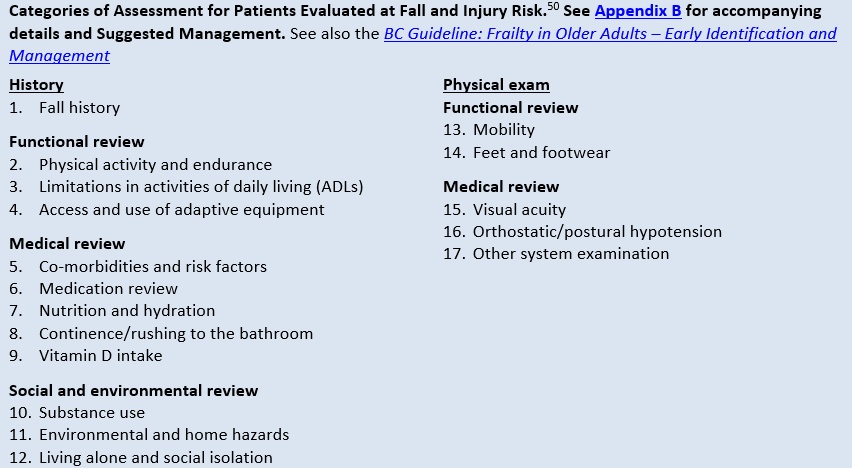Unknown Facts About Dementia Fall Risk
The Single Strategy To Use For Dementia Fall Risk
Table of ContentsThe Only Guide for Dementia Fall RiskThe 9-Minute Rule for Dementia Fall RiskDementia Fall Risk Fundamentals ExplainedThe Ultimate Guide To Dementia Fall Risk
An autumn danger evaluation checks to see exactly how likely it is that you will drop. It is primarily provided for older adults. The assessment typically includes: This consists of a collection of inquiries about your total wellness and if you've had previous falls or troubles with equilibrium, standing, and/or walking. These devices examine your toughness, balance, and stride (the means you walk).STEADI includes testing, analyzing, and intervention. Treatments are suggestions that may lower your danger of dropping. STEADI consists of three actions: you for your danger of falling for your threat variables that can be enhanced to attempt to stop falls (as an example, balance troubles, impaired vision) to lower your danger of falling by making use of efficient techniques (for instance, giving education and learning and sources), you may be asked a number of inquiries including: Have you dropped in the previous year? Do you feel unsteady when standing or strolling? Are you stressed over dropping?, your copyright will check your strength, balance, and stride, making use of the complying with loss assessment tools: This examination checks your stride.
If it takes you 12 secs or more, it may imply you are at higher risk for a fall. This test checks toughness and equilibrium.
Move one foot halfway onward, so the instep is touching the large toe of your various other foot. Move one foot fully in front of the various other, so the toes are touching the heel of your various other foot.
Not known Incorrect Statements About Dementia Fall Risk
Most falls take place as a result of several adding elements; consequently, handling the threat of falling starts with recognizing the elements that add to fall threat - Dementia Fall Risk. Some of the most pertinent threat variables consist of: Background of previous fallsChronic medical conditionsAcute illnessImpaired stride and balance, reduced extremity weaknessCognitive impairmentChanges in visionCertain risky medications and polypharmacyEnvironmental aspects can additionally raise the risk for falls, consisting of: Insufficient lightingUneven or damaged flooringWet or slippery floorsMissing or damaged hand rails and get hold of barsDamaged or incorrectly equipped tools, such as beds, wheelchairs, or walkersImproper use of assistive devicesInadequate supervision of the individuals residing in the NF, consisting of those that display hostile behaviorsA successful fall risk monitoring program needs a thorough scientific evaluation, with input from all participants of the interdisciplinary group

The care strategy should also consist of treatments that are system-based, such as those that promote a secure environment (proper illumination, handrails, get hold of bars, and so on). The efficiency of the interventions must be reviewed regularly, and the treatment strategy modified as necessary to mirror adjustments in the autumn risk analysis. Applying a loss risk administration system using evidence-based finest method can lower the prevalence of drops in the NF, while restricting the possibility for fall-related injuries.
All About Dementia Fall Risk
The AGS/BGS guideline suggests evaluating all grownups matured 65 years and older for fall risk every year. This testing contains asking people whether they have fallen 2 or even more times in the previous year or looked for clinical attention for a fall, or, if they have actually not dropped, whether they really feel unstable when walking.
Individuals who have fallen when without injury should have their equilibrium and gait reviewed; those with stride or equilibrium irregularities must obtain additional assessment. A history of 1 fall without injury and without gait or balance problems does not call for further analysis past ongoing annual fall threat screening. Dementia Fall Risk. An autumn danger analysis is needed as part of the Welcome to Medicare exam
-copy-5.jpg)
Dementia Fall Risk - The Facts
Recording a drops history is just one of the quality indicators for fall prevention and administration. An essential component of danger analysis is a i thought about this medicine review. Numerous classes of medications increase autumn threat (Table 2). copyright medicines particularly are independent predictors of drops. These drugs often tend to be sedating, modify the sensorium, and harm equilibrium and gait.
Postural hypotension can frequently be reduced by reducing the dose of blood pressurelowering drugs and/or stopping medicines that have orthostatic hypotension as an adverse effects. Use above-the-knee support hose pipe and copulating the head of the bed raised may likewise reduce postural decreases in high blood pressure. The advisable aspects of a fall-focused health examination are received Box 1.

A Yank time better than or equivalent to 12 secs recommends high loss risk. Being unable to stand up from a chair of knee height without using one's arms shows boosted fall danger.